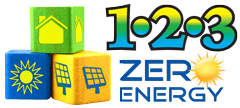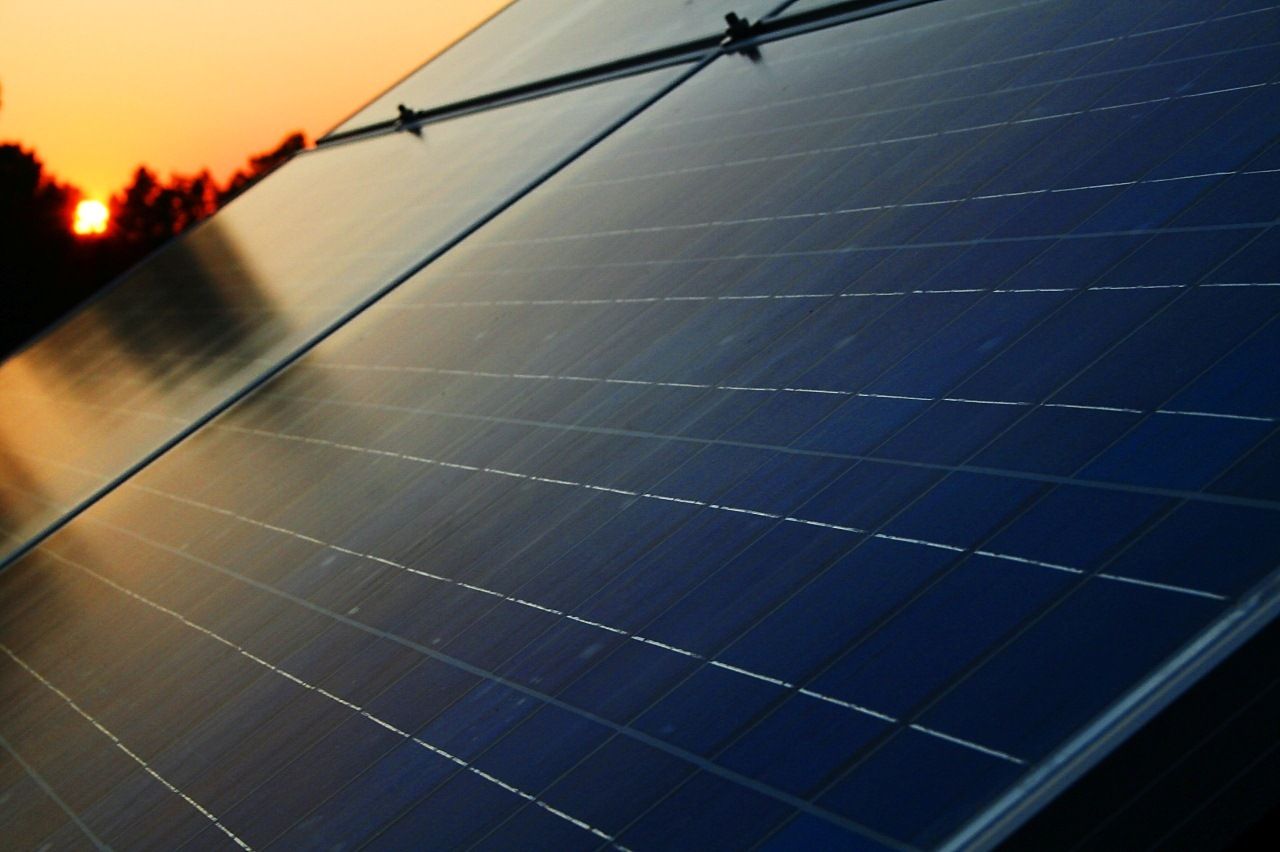Solar PV Info
Solar Photo Voltaic or PV is the creation of DC electricity from the sun. Albert Einstein first described this phenomenon in 1905 and won a Nobel Prize for his discovery. The first solar voltaic cells were created by Bell Laboratories in 1954. The technology was adopted by the NASA in the 1960 and wide spread production of PV cells became popular for use in small electronics such as calculators and wrist watches in the early 70’s.
Certain materials exhibit a property know as photoelectric which occurs at the atomic level. This is the principle in which the sun’s solar photons are absorbed by a semiconductor material causing it to release negative electrons. By using two charged layers, a negative layer and a positive layer, the electrons in the negative layer are release and flow to the positive layer. As the sun intensifies the more rapid this flow is and the stronger the current.
The photo cell semiconductor layers are made of silica wafers which are oppositely charged by coating them with certain material. The front of the cell contains the negatively charged layer and is coated in phosphorous and the back is the positive layer as is coated in boron. The sun strikes the negative layer freeing the electrons which are absorbed by the positive layer. By separating the layers with a metal coating we can then direct the flow of electrons into wires and by putting a load between these layers we can then create current and ultimately DC power.
PV Cells and Modules
Each of these Photovoltaic cells are known as a Cell and when combined together they form a PV module. Most popular modules used today are known as 60 cell and recently larger 72 cells have become popular as the prices continue to decline. A 60 cell normally produces 220-280 watts of power depending on the manufacture and a 72 cell produces 280-340 watts.
Solar Inverter
When combined together we can create an array of cells or better known as a Solar PV System. In this system the primary energy is still DC coming from the cell. Unfortunately DC power is not widely used in the house hold. Although DC appliances and lights can be found and used directly by a solar PV system, it is more common to find AC appliances. We do find DC appliances and lights in automobiles and camper trailers but generally we require AC for everyday living such as vacuums, washing machines, computers and TV etc. So to convert the DC power to AC, a solar PV system will need an inverter that converts the DC energy to AC. Inverters are very popular and most new cars even include an DC to AC inverter to be able to plug 120 Volt appliances.
Storage
There are 3 ways to store the solar energy you produce. The first is with DC batteries, the second is in hot water tanks, and the 3rd is by loaning it to others to be given back when needed, this method is called On Grid or Net Metering.
Batteries: In the past most solar consumers stored the solar energy in batteries and drew on this energy as needed. This is called an Off Grid Solar PV System and were very popular, however batteries are not the perfect solution and have associated costs that add to the price of an Off Grid solar system. Batteries have a useful shelf life that if not properly managed can be as short as 2-3 year and they have high capital costs. These battery system require specialized charge controllers to maintain and extend the batteries health. Most of the modern world is now connected to the grid so pure Off Grid are reserved mostly for those still in remote locations without access to grid power. However battery storage still remains popular and with recent development of lithium and saltwater batteries the life cycle of a battery is greatly extended and the cost of ownership have been reduced. Battery assisted back up solar system are also very popular where the grid is prone to outages.
Hot Water: While in the past hot water tanks were used as a dump zone for any excess PV production when batteries were fully charged. However more recently the Solar PV Hot Water has become its own application for more than just a dump zone, and can provide incredible returns by focusing only on heating hot water. While solar thermal has been the leader in this field, the drastic cost reduction and the introduction of the CyboInverter, has given solar thermal some competition. By hooking a solar array directly to a hot water heater, you can supply all your hot water demands with very little cost and free storage. Hot water heating is estimated to consume 20-25% of a typical household’s energy. Solar PV Water may have the highest system paybacks!
Net Metering: Instead of storing you energy why not lend it out to other just like lending your neighbor your lawn mower! When you need it back it will be right there. With the development of the smart grids, utility companies are able to accept anyone’s energy and have opened up Net Metering or On Grid Solar PV Systems. These systems don’t use any batteries and instead a DC inverter converts the electricity to AC, the home can use this energy but if it has surplus, the energy flows outside the house to the grid. All modern electrical meters on a home have the ability to allow the flow both ways and will record a negative consumption when energy is flowing out of the house to the grid. This new Net Metering means the cost of a solar system is drastically reduced as no storage is needed, making grid parity (cost of solar = cost supplied by the utility) a reality. All 52 US states and all provinces in Canada have net metering options available to consumers and businesses.





